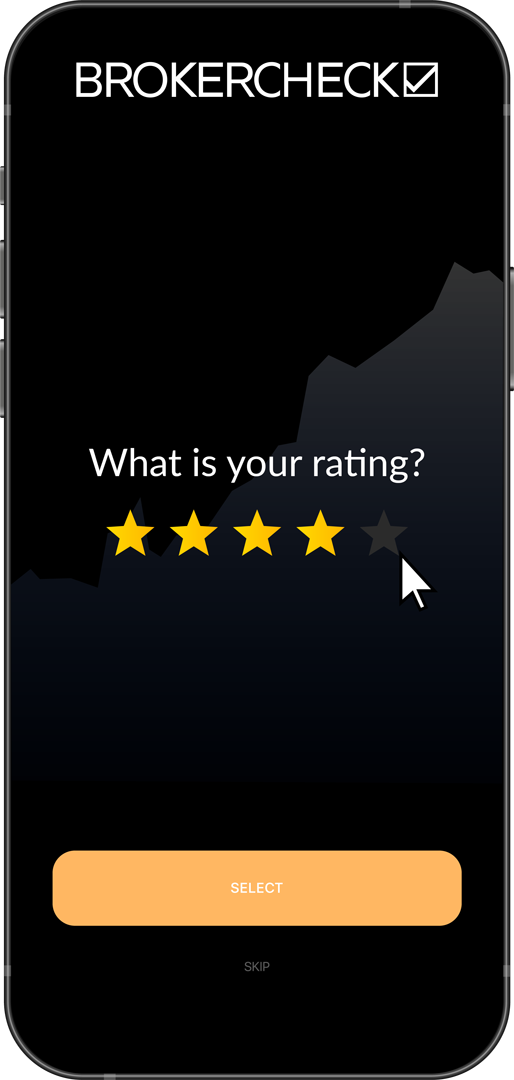1. Understanding the Balance of Power Indicator
The Balance of Power Indicator is a powerful tool that can provide unparalleled insight into the market’s inner workings. Essentially, this indicator reveals the tug-of-war between buyers and sellers in the market, providing a deeper understanding of the market forces at play. When the balance of power tilts towards the buyers, it indicates a bullish market, and conversely, a tilt towards the sellers signals a bearish market.
To use the Balance of Power Indicator effectively, you need to understand its nuances. This indicator doesn’t just fluctuate between positive and negative values. Instead, it presents a continuum, with zero as the midpoint. Values above zero indicate buying pressure, while values below zero signify selling pressure. However, these values are not absolute. Instead, they should be viewed in the context of the market’s overall trend. A positive value doesn’t always mean a bullish market, especially if the overall trend is bearish.
Interpreting the Balance of Power Indicator is an art that requires practice. An abrupt shift in the indicator can signal a potential market reversal. For instance, if the indicator suddenly swings from a high positive value to a low negative one, it may suggest that the buyers are losing control and a bearish reversal could be imminent. Conversely, a sudden shift from a negative to a positive value could signal a bullish reversal.
Remember, the Balance of Power Indicator is not a standalone tool. It works best when used in conjunction with other technical analysis tools. For instance, you can use it alongside volume indicators to confirm the strength of a trend. If the Balance of Power Indicator shows buying pressure and the volume is high, it confirms a strong bullish trend.
In the fast-paced world of trading, the Balance of Power Indicator can be your secret weapon, offering a unique perspective on the market dynamics. But like any tool, its effectiveness lies in how well you understand and use it. So, take the time to study this indicator, practice interpreting its signals, and integrate it into your trading strategy. This way, you can leverage its insights to make informed trading decisions and maximize your profits.
1.1. Definition of Balance of Power
In the dynamic world of trading, understanding the Balance of Power (BoP) is akin to having a secret weapon in your arsenal. This crucial concept, often overlooked by novices, is a technical analysis tool that can provide significant insights into market behavior. Essentially, the BoP is an indicator that measures the strength of buyers against sellers in the market, providing a quantitative representation of the tug-of-war between these two groups.
The BoP is calculated by subtracting the volume traded at the bid price (selling pressure) from the volume traded at the ask price (buying pressure). The resulting value can be either positive, negative, or zero. A positive BoP suggests that buyers are in control, while a negative BoP indicates that sellers have the upper hand. A zero value, on the other hand, signifies a balanced market.
Understanding the BoP can offer traders a unique perspective into market sentiment and momentum. When the BoP is positive over an extended period, it’s a sign that buyers are consistently exerting more pressure, which could herald an upward trend. Conversely, a sustained negative BoP may signal a potential downward trend. This information can be invaluable for traders, helping them make informed decisions and potentially boosting their trading success.
However, while the BoP is a powerful tool, it’s important to remember that it’s not infallible. Like all indicators, it should be used in conjunction with other analysis techniques to ensure a comprehensive understanding of market dynamics. Furthermore, the BoP is most effective in a liquid market, where large volumes of trades are conducted. In less liquid markets, the BoP may not provide an accurate reflection of the true balance of power.
Using the Balance of Power successfully involves understanding its limitations as well as its strengths. It’s not a magic bullet, but when used correctly, it can provide invaluable insights that can help you stay one step ahead in the ever-changing world of trading.
1.2. Interpreting the Balance of Power
In the world of trading, the Balance of Power (BoP) is a significant tool that can provide traders with invaluable insights into the market’s direction. It’s a technical analysis indicator that measures the market strength of buyers against sellers. When the BoP is positive, it indicates that buyers are in control, signaling a potential upward trend. Conversely, when the BoP is negative, it suggests that sellers are dominating, indicating a possible downward trend.
Understanding the BoP is crucial for traders who wish to make informed decisions. It’s not just about identifying whether the indicator is positive or negative; it’s about observing the trend over time. For instance, a continually rising BoP, even if it remains negative, could suggest that buyers are gradually gaining control. On the flip side, a consistently declining BoP, even if it’s still positive, might imply that sellers are slowly taking over.
Using the BoP also requires understanding its limitations. It’s not a standalone tool; rather, it’s most effective when used in conjunction with other indicators. For example, a positive BoP coupled with a rising volume could reinforce the signal of an upward trend. However, a positive BoP with a declining volume might suggest a weakening trend, warranting caution.
Interpreting the BoP is not about looking for absolutes but about seeking clues. It’s about piecing together the puzzle of market dynamics, using this tool to help determine who’s in control: buyers or sellers. Therefore, successful use of the Balance of Power doesn’t just involve understanding the mechanics of the indicator; it also requires a keen sense of observation and the ability to interpret the nuances of market movements.
2. Using the Balance of Power in Trading
The Balance of Power (BoP) is a potent tool that, when wielded correctly, can give traders a significant edge in the market. It essentially measures the strength of buyers against sellers in the market, providing a sense of who is ‘in control’ at any given time. This indicator is typically used in conjunction with other tools and strategies to maximize trading success.
To use the BoP effectively, traders should first understand that it oscillates around a zero line, representing a balance between buying and selling pressure. When the indicator is above zero, it signals that buyers are in control, suggesting a potential upward price movement. Conversely, when the BoP is below zero, it indicates that sellers have the upper hand, implying a possible downward price trend.
One of the key strategies when using the BoP is to look for divergences between the indicator and the price. For instance, if the price is making higher highs while the BoP is making lower highs, it could signal a bearish divergence, indicating that the upward trend may soon reverse. On the other hand, if the price is making lower lows while the BoP is making higher lows, it could suggest a bullish divergence, hinting at a potential upward price reversal.
Another effective strategy is to use the BoP in conjunction with other technical indicators. For example, traders can use it with moving averages to identify potential trend changes. When the BoP crosses above a moving average, it could signal a potential shift to a bullish trend. Similarly, when the BoP crosses below a moving average, it could indicate a shift to a bearish trend.
Patience and discipline are crucial when using the BoP. Traders should not rush into trades based on a single BoP signal. Instead, they should wait for confirmation from other indicators and tools. Additionally, traders should always set stop losses and take profit levels to manage their risk effectively.
The Balance of Power is a powerful tool in a trader’s arsenal. However, like any tool, it is most effective when used correctly and in conjunction with a well-thought-out trading strategy. By understanding how the BoP works and how to use it effectively, traders can gain a significant edge in the market, helping them achieve their trading goals.
2.1. Setting Up the Balance of Power Indicator
Embarking on the journey of trading can be an exciting but daunting endeavor. One of the most critical tools in your trading arsenal is the Balance of Power Indicator. This powerful tool can provide invaluable insight into the tug of war between buyers and sellers, helping you make informed decisions.
Initiating the setup of the Balance of Power Indicator starts with selecting this option from your trading platform. Most platforms, including popular ones like MetaTrader 4, have this feature in their suite of tools. Once selected, a new window will appear on your screen, displaying the Balance of Power Indicator graph.
Customizing the Balance of Power Indicator is the next step. Here, you can adjust the period, which is the number of bars used to calculate the indicator. While the default setting is typically 14 bars, you might want to tweak this based on your trading strategy and style. Short-term traders might prefer a lower number, while long-term traders may opt for a higher number.
Interpreting the Balance of Power Indicator is vital. When the indicator line moves above zero, it signifies that buyers are gaining control, a possible bullish signal. Conversely, when the line dips below zero, it indicates that sellers are in command, potentially signaling a bearish market.
Integrating the Balance of Power Indicator into your trading strategy can enhance your market analysis. It’s crucial to remember that no indicator is foolproof, and it’s always recommended to use it in conjunction with other tools and analyses.
Practice using the Balance of Power Indicator in a demo account before applying it to your live trading. This will help you understand its nuances and how it reacts to different market conditions. With time and experience, you’ll be able to wield this powerful tool effectively, helping you navigate the choppy waters of the trading world.
2.2. Incorporating Balance of Power into a Trading Strategy
In the dynamic world of trading, the Balance of Power (BOP) indicator plays a critical role in shaping a successful strategy. This potent tool, when incorporated correctly, can provide a trader with a discernible edge over the market. The BOP is a quantitative measure that analyzes the strength of buyers and sellers in the market, providing insights that can help determine the right time to enter or exit a trade.
To leverage this tool, it is crucial to understand its basic function. The BOP oscillates around a zero line, with positive values indicating buying pressure and negative values suggesting selling pressure. When the BOP crosses above the zero line, it may be a good time to consider a long position. Conversely, when it dips below, it might be an opportune moment to short.
However, one must not rely solely on these basic signals. The real power of BOP lies in its ability to reveal hidden market dynamics. For instance, if the price is rising but the BOP is falling, it indicates that the rise is not supported by the market’s power balance and may soon reverse. This divergence between price and BOP can be a powerful signal to adjust your strategy.
Moreover, the BOP can also be used in conjunction with other indicators for a more comprehensive analysis. For example, combining BOP with volume data can provide deeper insights into the market’s behavior. A sudden increase in volume accompanied by a significant shift in the BOP could suggest a strong trend.
Remember, while the BOP is a powerful tool, it should not be used in isolation. It is one piece of the puzzle in creating a comprehensive, robust trading strategy. As with all indicators, the BOP should be used in conjunction with other tools and analysis methods to confirm signals and reduce the risk of false positives. A thoughtful and informed approach to incorporating the BOP into your trading strategy can significantly enhance your trading success.
2.3. Risk Management with Balance of Power
Risk management is an integral part of any trading strategy, and when it comes to utilizing the Balance of Power (BOP) indicator, it’s no different. This potent tool, when used correctly, can help traders identify shifts in market trends and potential entry or exit points. However, the key to using it effectively lies in understanding its nuances and applying stringent risk management practices.
The BOP indicator measures the strength of buyers against sellers in the market, providing a window into the underlying sentiment that may not be immediately clear from price action alone. When the BOP is positive, it suggests buyers have the upper hand; when negative, sellers are in control. But, it’s not just about whether the BOP is positive or negative. It’s also about how it’s changing over time. A rising BOP, even if it’s still negative, could indicate a shift in power towards buyers, signalling a potential buying opportunity.
One of the key risk management practices when using the BOP is to never rely on it alone. While it can provide valuable insights, it should be used in conjunction with other tools and indicators to confirm its signals. This multi-faceted approach can help reduce the risk of false signals and improve the overall accuracy of your trading strategy.
Another crucial aspect of risk management with the BOP is setting stop losses and take profit levels. These should be determined based on the trader’s risk tolerance and the overall market conditions, not just the BOP readings. By setting appropriate stop losses and take profit levels, traders can ensure they limit their losses and secure their profits, even if the market doesn’t move in the expected direction.
Finally, it’s important to remember that while the BOP can be a powerful tool, it’s not infallible. Like all indicators, it’s prone to false signals and should be used with caution. Always remember to thoroughly backtest any strategy using the BOP before deploying it in live trading. This way, you can gain a better understanding of its strengths and weaknesses, and adjust your strategy accordingly.
3. Advantages and Limitations of the Balance of Power Indicator
The Balance of Power (BOP) indicator is a potent tool that offers a unique perspective on market trends. It is designed to reveal the strength of buyers and sellers in the market, providing traders with a clear view of the market’s balance of power. One of its key advantages is its ability to identify hidden buying and selling pressure that other indicators may miss. This can provide traders with a crucial edge in volatile markets.
Another significant advantage of the BOP indicator is its simplicity and ease of use. It presents data in a straightforward manner, making it accessible to traders of all experience levels. With the BOP, you can quickly identify market trends and make informed decisions based on the balance between buying and selling pressure.
However, it’s important to remember that like any other tool, the BOP indicator has its limitations. It is a lagging indicator, which means it reflects past market conditions. While it can provide valuable insights into market trends, it is not designed to predict future market movements.
Furthermore, the BOP indicator can sometimes give false signals, especially in highly volatile markets. This means that it should be used in conjunction with other technical analysis tools to confirm signals and mitigate risk.
Lastly, while the BOP indicator can help identify market trends, it does not provide information on price levels or specific entry and exit points. Therefore, it should be used as part of a comprehensive trading strategy, rather than as a standalone tool.
3.1. Benefits of Using Balance of Power
The Balance of Power (BOP) indicator is a valuable tool in the arsenal of any seasoned trader. It offers a unique perspective on market dynamics, providing insights into the strength and direction of the buying and selling pressure. By analyzing the balance between these two forces, traders can identify potential turning points in the market, creating opportunities for strategic trades.
One of the key benefits of using the BOP is its ability to reveal hidden shifts in the market. Often, these shifts are not immediately apparent in the price action, but they can significantly impact future price movements. The BOP can help traders spot these subtle changes early, allowing them to adjust their strategies accordingly and stay one step ahead of the market.
The BOP also excels in confirming trends. A rising BOP line indicates that buying pressure is dominating, which can confirm an uptrend. Conversely, a falling BOP line suggests that selling pressure is in control, potentially confirming a downtrend. This can provide traders with the confidence to hold their positions during a trend, or signal when it might be time to exit.
In volatile markets, the BOP can act as a stabilizing force. It smooths out short-term price fluctuations, providing a clearer picture of the underlying market trend. This can help traders avoid being whipsawed by sudden price changes, and make more informed decisions based on the broader market context.
Finally, the BOP is a versatile tool that can be used in conjunction with other technical indicators. For example, combining the BOP with volume indicators can offer a more comprehensive view of market dynamics. This can enhance the accuracy of your market analysis, and ultimately, the success of your trading strategy.
3.2. Drawbacks and Considerations
While the Balance of Power (BoP) indicator is a powerful tool in a trader’s arsenal, it is not without its drawbacks. For one, it may generate false signals in a highly volatile market, leading to potential losses. It is crucial to remember that the BoP is a lagging indicator, meaning it reflects past price movements. Therefore, it may not always accurately predict future trends.
Another consideration is that the BoP is best used in conjunction with other technical analysis tools. Relying solely on the BoP could result in an incomplete picture of the market, potentially leading to ill-informed trading decisions. For instance, incorporating trendlines or moving averages can provide additional context and confirmation for the signals generated by the BoP.
Furthermore, the BoP is sensitive to the choice of the look-back period. A shorter look-back period may lead to more frequent signals, but with a higher chance of false positives. Conversely, a longer look-back period may reduce the number of false signals, but at the cost of potentially missing out on short-term trading opportunities.
Lastly, like any technical analysis tool, the effectiveness of the BoP can vary depending on the market conditions and the asset being traded. Therefore, it is vital for traders to backtest and adapt their strategies based on their specific trading objectives and risk tolerance.
In short, while the Balance of Power can provide valuable insights into market dynamics, it should not be used in isolation. Understanding its limitations and integrating it with other analysis tools can help traders make the most of this indicator.










